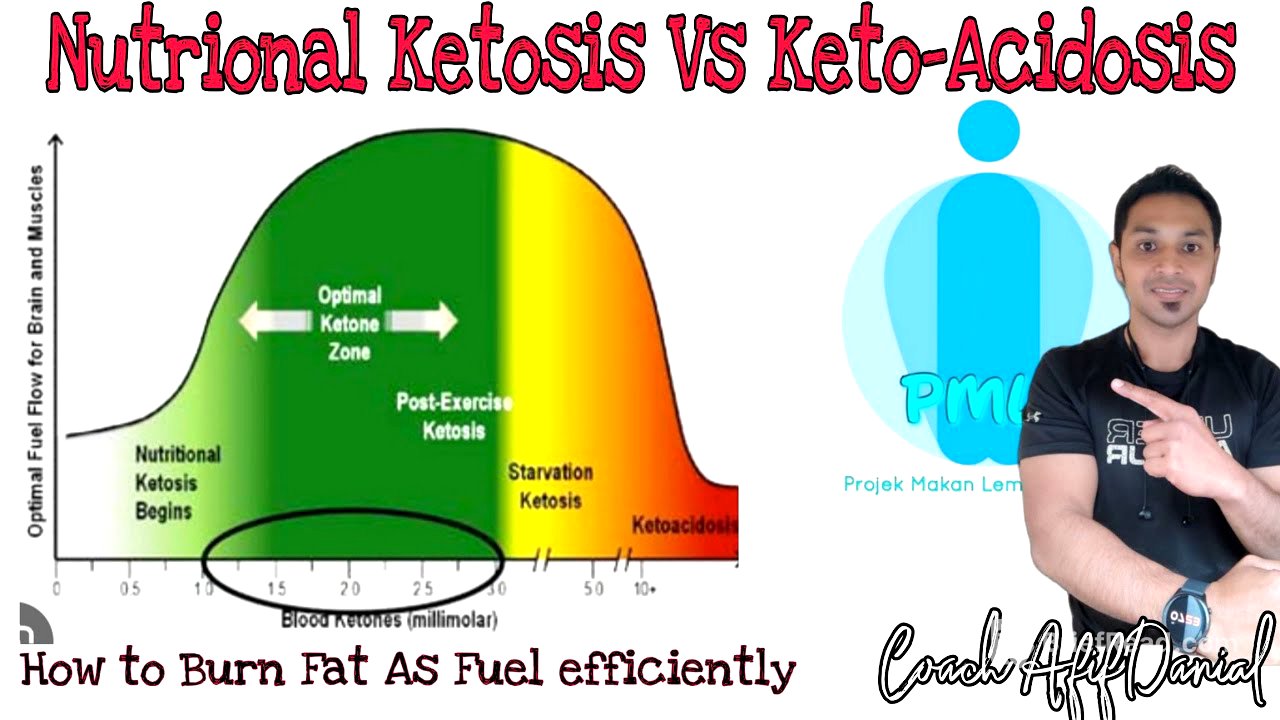TLDR;
This video by Coach Afif Danial provides an in-depth explanation of energy, ketosis, and related health concepts. It covers how the body processes carbohydrates and fats, the implications of fat storage, the differences between nutritional ketosis and ketoacidosis, and the importance of monitoring blood sugar and ketone levels. The video also touches on practical aspects of following a ketogenic diet, including supplement recommendations and strategies for maintaining optimal health.
- Energy processing and storage in the body.
- Ketosis vs. Ketoacidosis.
- Monitoring and maintaining optimal health on a ketogenic diet.
Introduction [0:00]
Coach Afif Daniel introduces himself and the topic of the class, which includes ketosis and ketoacidosis. He mentions that the video will be helpful for both new and existing members who want to learn more about these concepts. He also jokes about his personal weight loss journey, emphasizing that he focuses on inch loss rather than just weight loss due to his gym activities and muscle gain.
Energy Processing in the Body [3:21]
The discussion begins with an explanation of how the body processes energy from carbohydrates. When we eat carbs, the body converts them into sugar in the blood. Excess sugar is stored as glycogen in the liver (up to 100 grams) and muscles. If we consume more than what can be stored as glycogen, the body converts the excess into body fat through a process called triglyceride formation. Triglycerides are fats stored in fat cells, which can accumulate significantly.
Fat Threshold and Diabetes [9:35]
The concept of "fat threshold" is introduced, explaining that not everyone can store the same amount of fat. Some individuals may develop diabetes even at a lower weight because their bodies cannot efficiently store excess fat. When fat reserves are full, insulin resistance occurs in fat cells, leading to high triglyceride levels, fatty liver, and elevated blood sugar. This explains why some thin people can also develop diabetes, as their bodies are unable to store fat effectively.
Monitoring Triglycerides and Blood Sugar [14:29]
To prevent health issues related to fat storage, it's important to monitor triglyceride levels, aiming for a level not higher than one tag and ideally around 0.8 or lower. Blood sugar levels also need to be controlled, as high levels indicate that the body is not converting sugar into glycogen efficiently.
Understanding HbA1c [17:47]
HbA1c is explained as an average reading of blood sugar levels over the past 90 to 100 days, reflecting the lifespan of red blood cells. This test provides a more accurate picture of long-term blood sugar control compared to daily readings, which can fluctuate. However, it's noted that some people have red blood cells that live longer, which can affect HbA1c readings. The speaker emphasizes that current blood sugar levels are more important for managing inflammation in the body.
Ketoacidosis vs. Nutritional Ketosis [28:59]
The video distinguishes between ketoacidosis and nutritional ketosis. Ketoacidosis is a dangerous condition where there are excessively high levels of ketones in the body, making the blood too acidic and interfering with enzyme function. This typically occurs in individuals with poorly managed diabetes. Nutritional ketosis, on the other hand, is a safe range of ketone production achieved through diets like FLK (Fat Loss Kickstart), where the body uses fat as energy and sugar levels are low.
The Process of Ketosis [34:03]
The normal process involves eating, which leads to sugar in the blood. Insulin helps convert this sugar into fat for storage. In ketoacidosis, the body can no longer store fat, leading to high blood sugar and the use of body fat as energy, resulting in high ketone levels. Insulin resistance means the body struggles to store fat, requiring more insulin to force fat storage. Doctors often prescribe insulin to reduce ketone levels and lower blood sugar in diabetic patients.
The Role of the Pancreas and Gallbladder [41:15]
The pancreas, located behind the liver, produces insulin and glucagon. It shares a duct with the gallbladder, so gallbladder issues can block insulin production. The gallbladder stores bile, which is essential for fat metabolism. Consuming healthy fats helps maintain a healthy gallbladder. Gastric bypass surgery bypasses the duodenum, where insulin is released, preventing the body from fully processing nutrients and potentially leading to nutritional deficiencies.
Understanding Ketones [51:11]
Ketones are an energy source produced when the body burns fat. During fasting, when sugar and glycogen levels are low, the body uses triglycerides from fat cells. The liver converts these triglycerides into glycerol (which becomes glucose) and free fatty acids (which become ketones). There are three types of ketones: acetic acid, acetone, and hydroxybutyrate.
Measuring Ketones [58:37]
Ketone levels can be measured using urine strips, breath meters, and blood ketone meters. Urine strips are inexpensive but not very accurate, as the body becomes more efficient at using ketones over time, reducing the amount excreted in urine. Breath meters measure acetone levels, but can be costly. Blood ketone meters, which measure ketones in the blood, are considered the most accurate.
Recommended Ketone Levels and GKI [1:09:50]
It's recommended to maintain ketone levels between 1.2 to 2.8 mmol/L. High ketone levels (above 3) can lead to starvation ketosis, where the body becomes resistant to burning fat. The Glucose Ketone Index (GKI) is introduced as a measure of the ratio between glucose and ketones, calculated as glucose divided by ketones. A low GKI is desirable, indicating efficient fat burning.
GKI and Therapeutic Ketosis [1:17:32]
Different GKI ranges are associated with various health states: a GKI above 9 indicates no fat burning, 6-9 indicates some fat burning, 3-6 is ideal for reversing diabetes, and 1-3 is used in therapeutic ketosis for conditions like cancer and epilepsy under medical supervision. The ketogenic diet originated from treating epilepsy in children, where it was observed that reducing sugar intake and inducing ketosis helped control seizures.
Case Study: GKI Experiment [1:22:46]
A case study is presented involving Kak Reva, who experimented with different eating patterns and monitored her GKI. The experiment showed that consuming carbohydrates required 48 hours to re-enter fat burning. The results highlighted the importance of consistent dietary habits and the impact of carbohydrate intake on GKI levels.
Supplements for Ketosis [1:35:11]
The video recommends several supplements to support a ketogenic diet, including Double X (multivitamin with phytonutrients), Daily (multivitamin), Omega (essential fatty acids), Lecithin (triglyceride transporter), Merktisel (supports liver and kidney function), and Green T Plus (fat burner). These supplements can help speed up the ketosis process and support overall health.
Conclusion and Giveaway [1:44:55]
The session concludes with a quiz where the winner receives a ketone meter. The coach emphasizes the importance of understanding the concepts discussed and encourages viewers to share the information with friends who may be interested in joining PMLS. He also thanks the participants for their engagement and participation.









